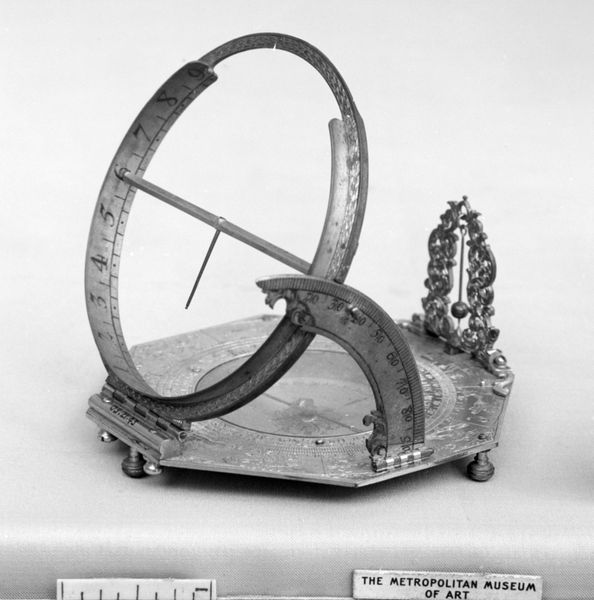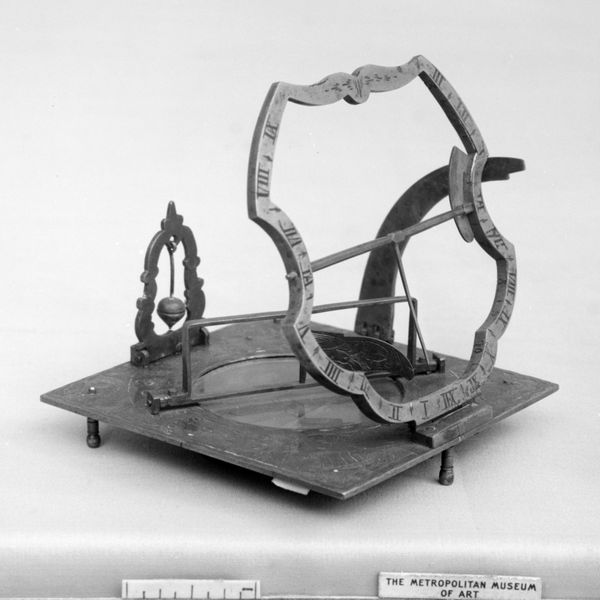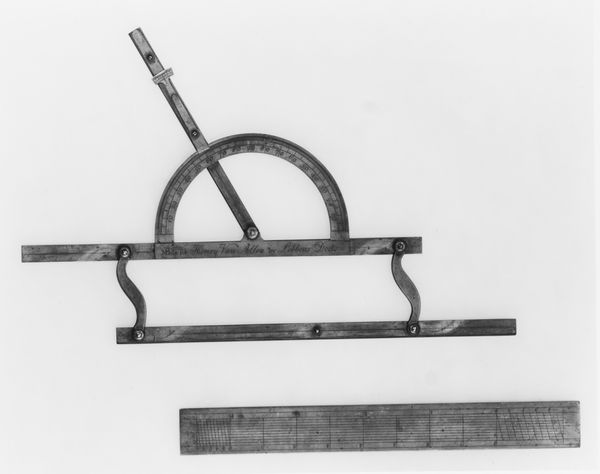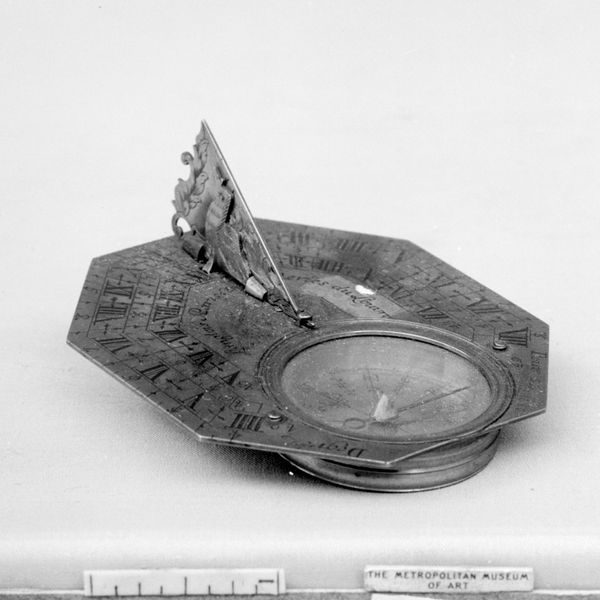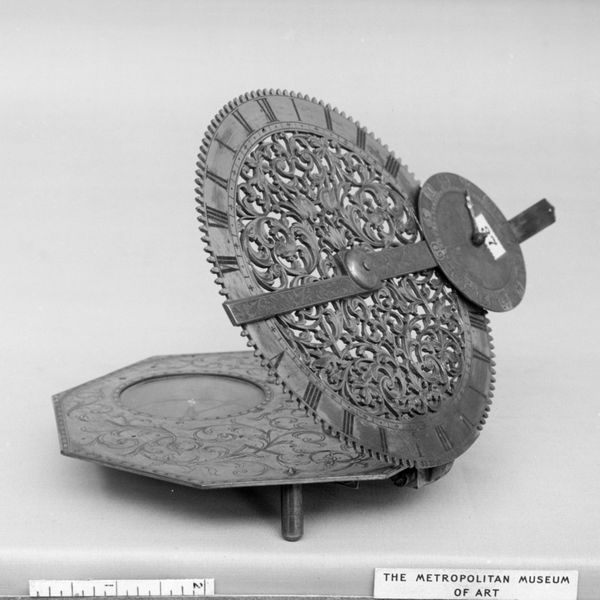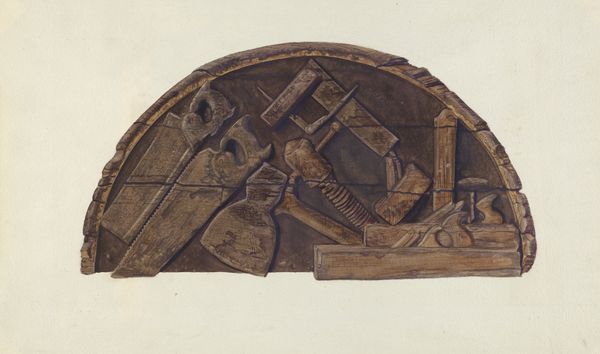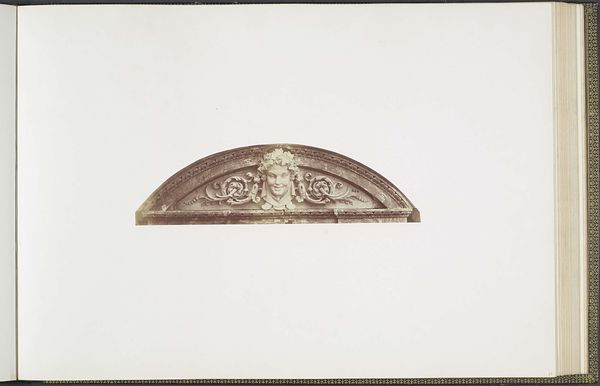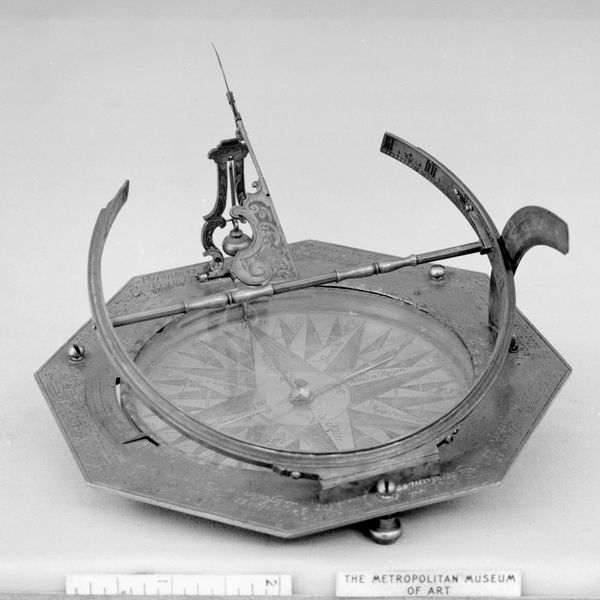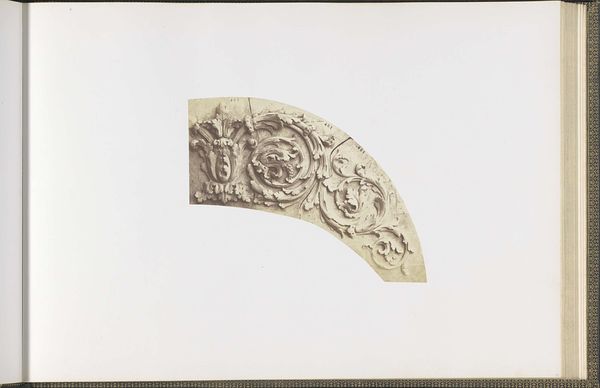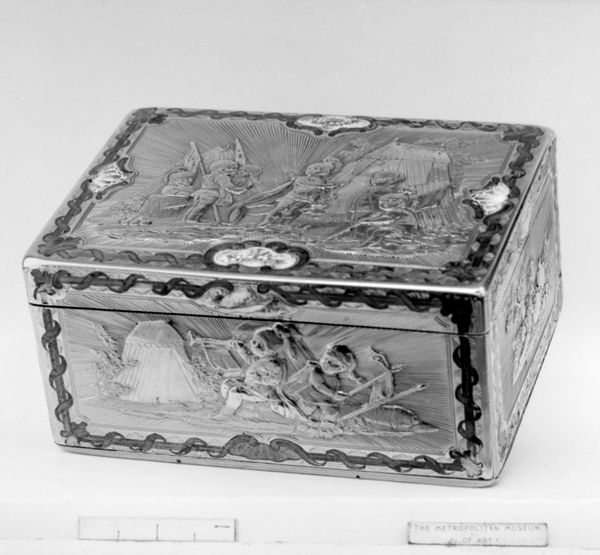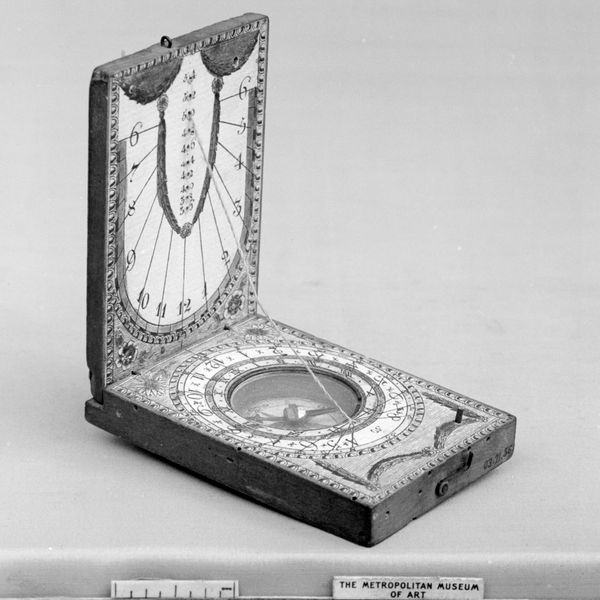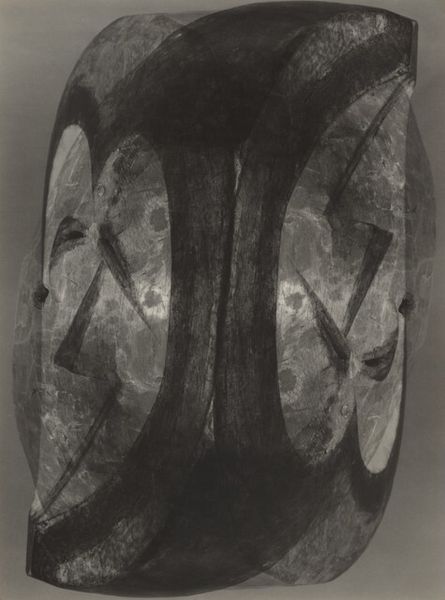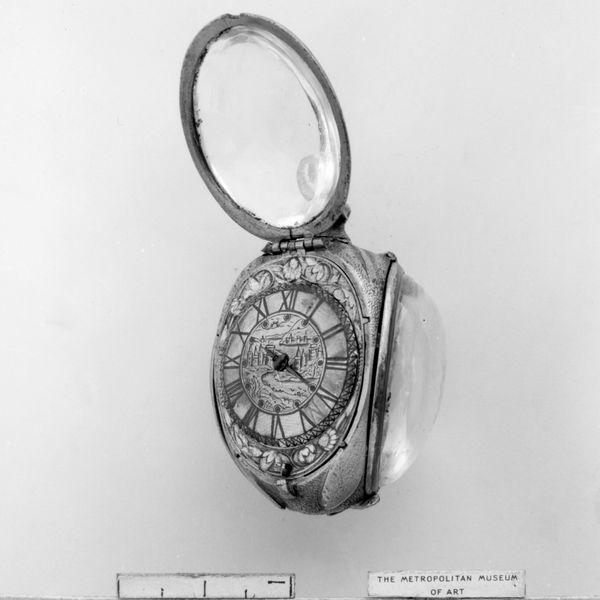
Dimensions: Overall: 2 7/8 × 2 1/2 in. (7.3 × 6.4 cm)
Copyright: Public Domain
Curator: What an intricate device! Before us is a portable equatorial sundial, crafted by Andreas Vogler sometime between 1761 and 1795. It’s currently part of the collection at the Metropolitan Museum of Art. Editor: My immediate thought is one of pure geometry. The severe lines of the octagonal base contrasting with that perfect circle marked with Roman numerals. It's a captivating paradox, a blend of rigid structure and graceful curves. Curator: It represents an interesting moment. These miniature instruments, made of metal, were often luxury items reflecting the period’s fascination with both science and ornamentation. Owning such an object speaks volumes about status and intellectual interests during the Baroque period. Editor: Right. Note how the piece stages a very intentional relationship between form and function. The decorative flourish hasn’t simply been added as surface detail, but carefully integrated into the geometric structure. The decorative filigree seems functional in its way, as if holding together space and time, much more than simply an aesthetically pleasing addition. Curator: Precisely! It embodies the broader cultural value of time in the late 18th century. The sundial would have been a constant reminder of the owner’s ability to understand and measure their world, solidifying their position within a certain social hierarchy. Think also about the implications of portability, suggesting that even on journeys, they can perform scientific readings and be "in control" wherever they go. Editor: Yes. Now think about how sunlight plays on the metallic surfaces. Light here is not just about observation; it’s also an integral part of its operational system. Light *sculpts* form. The passage of the sun defines how light moves through this intricate arrangement of geometric solids. Curator: Its delicate craftsmanship underscores the emphasis on detailed observation, aligning with both the artistic principles and the developing scientific thought of the time. To possess a portable sundial was to wield both artistry and burgeoning modern science in a portable manner. Editor: Looking at this today, it’s also tempting to interpret this Baroque sundial as a pre-digital rendering of what it meant to exist meaningfully in the space-time continuum. Before iPhone clocks or the relentless ticks of computerized machinery, a physical mechanism captured the rhythms of the cosmos with ornate intricacy. Curator: Indeed. Its cultural footprint serves as an insightful, measured fragment of its epoch, wouldn't you agree? Editor: Yes, definitely. A true spectacle of metal and light that merges design, historical insight, and philosophical considerations, reminding me that everything and nothing has changed over the past couple of centuries!
Comments
No comments
Be the first to comment and join the conversation on the ultimate creative platform.
